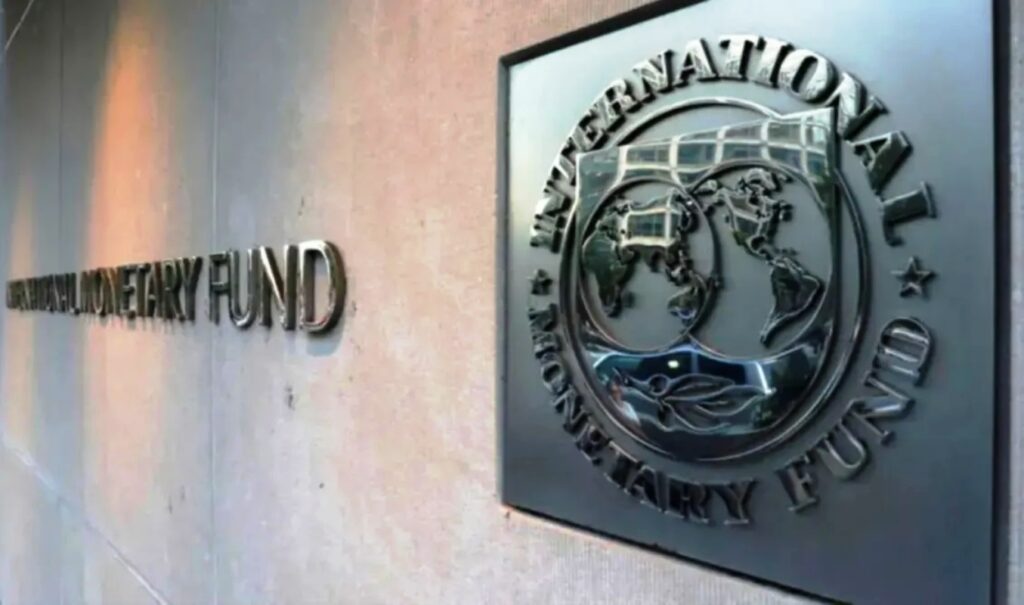The International Monetary Fund has made an unexpected positive revision to its global economic forecasts, setting the tone for 2025 and 2026. The de-escalation of trade tensions, following Donald Trump’s retreat from threats of tariffs, was a decisive factor in improving the economic climate. The IMF now forecasts 3% growth for 2025, while emphasizing that risks – from protectionism to pressure on central banks – continue to threaten stability.
According to the new World Economic Outlook, global growth rates will reach 3% this year and improve slightly further to 3.1% in 2026. The new forecast represents an increase of 0.2 percentage points compared to the April 2025 report, while for 2026 the increase reaches 0.1%.
However, despite this upgrade, the new data still points to a slowdown in the global economy compared to 2024, when growth rates had reached 3.3%. Before the pandemic, the average annual rate was close to 3.7%.
“Global growth has been revised upward to 3% for 2025 and 3.1% for 2026, reflecting stronger-than-expected economic activity, lower tariffs compared to early April, milder financial conditions, including dollar weakening, as well as fiscal expansions in certain regions,” emphasized the Fund’s chief economist, Pierre-Olivier Gourinchas.
The role of tariffs and the White House
The international organization noted that the “de-escalation of tariffs” by the White House contributed to the recovery of global trade and broader economic growth. However, it also warned that US policies remain “particularly unpredictable” and that risks to the global economy remain “consistently downward”.
Most regions benefited from improved prospects, including the world’s leading economies, namely the US and China.
Specifically for the US, growth is estimated to be upgraded to 1.9% this year and 2% next year, compared to 1.8% and 1.7% respectively from the previous report.
Similarly for China, this year’s prospects improve significantly by 0.8 points, with the growth rate expected at 4.8%.
Regarding inflation, the IMF has optimistic news for this issue as well, forecasting a gradual de-escalation of prices.
Specifically, the report argues that global inflation is expected to decline to 4.2% in 2025 and 3.6% in 2026.
Reduction of trade risk
Last April, the US President had threatened to impose strict tariffs on imports from the world’s largest exporters, such as the United Kingdom, the European Union, China and South Korea, aiming – as he claimed – to combat unfair competition.
Stock markets collapsed and the US dollar declined, as investors worried about potential damage to global trade and turned to safe investment havens.
However, the climate began to change recently after a series of agreements with strategic US trading partners, such as with Britain, Japan and the European Union. In fact, these days a new round of talks with China is “running” in Stockholm aimed at at least extending the trade ceasefire between Washington and Beijing.
It’s no coincidence that the Fund’s economist characteristically commented that the US “partially reversed course” in the critical trade field, reducing the average level of tariffs from 24% to about 17%. Although he warned that “despite positive developments, tariffs remain at historically high levels and global trade policy remains extremely uncertain, as only a few countries have concluded comprehensive trade agreements”.
The White House has set August 1st as the deadline for several countries, including Vietnam and South Korea, to sign trade agreements with the US.
“Risks remain on the downside. A failure in trade negotiations or a revival of protectionism could cut global growth and trigger inflation in certain countries,” he noted.
“Prolonged uncertainty can burden investments, while geopolitical tensions and fiscal weaknesses constitute additional threats. Despite the fact that financial conditions have relaxed, they may suddenly tighten, especially in case of threats to central bank independence,” added the IMF’s chief economist.
Indirect criticism of Trump for pressure on the Fed
Notable is the fact that the IMF’s chief economist chose to comment indirectly but clearly on the open pressure from Donald Trump on the Federal Reserve regarding its interest rate policy. Although Pierre-Olivier Gourinchas naturally avoided referring to specific names, he pointed out that global conditions could deteriorate further in case of intensifying attacks on central banks that would undermine their independence.
“It is crucial to reaffirm and safeguard the principle of central bank independence. The evidence is unshakable: independent central banks, with clear and limited mandates for achieving price stability and growth, are vital for containing inflation expectations,” he stated.
“The fact that central banks worldwide achieved a ‘soft landing’ despite the recent inflation surge is largely due to the independence and credibility they have built with effort,” he added.
Fiscal recommendations
Referring to recommendations for policymakers, Gourinchas emphasized that economic policy should strengthen confidence, predictability and sustainability, promoting price and financial sector stability, restoring fiscal margins and advancing critical reforms.
“Reducing policy uncertainty is vital. This is particularly true for trade policy, where the global economy needs clear, transparent and predictable rules,” he stated characteristically.
He emphasized that many countries must address their fiscal weaknesses and rebuild their reserves, even if they face increased spending. “Central banks must maintain price and financial condition stability while protecting their independence,” he noted.
In conclusion, Gourinchas noted that exchange rate flexibility remains crucial, although “in certain cases targeted interventions may be appropriate, within the framework of the IMF’s unified policy framework”.
Additionally, he emphasized that structural reforms that facilitate policy choices and enhance long-term growth are necessary for maintaining prosperity.




